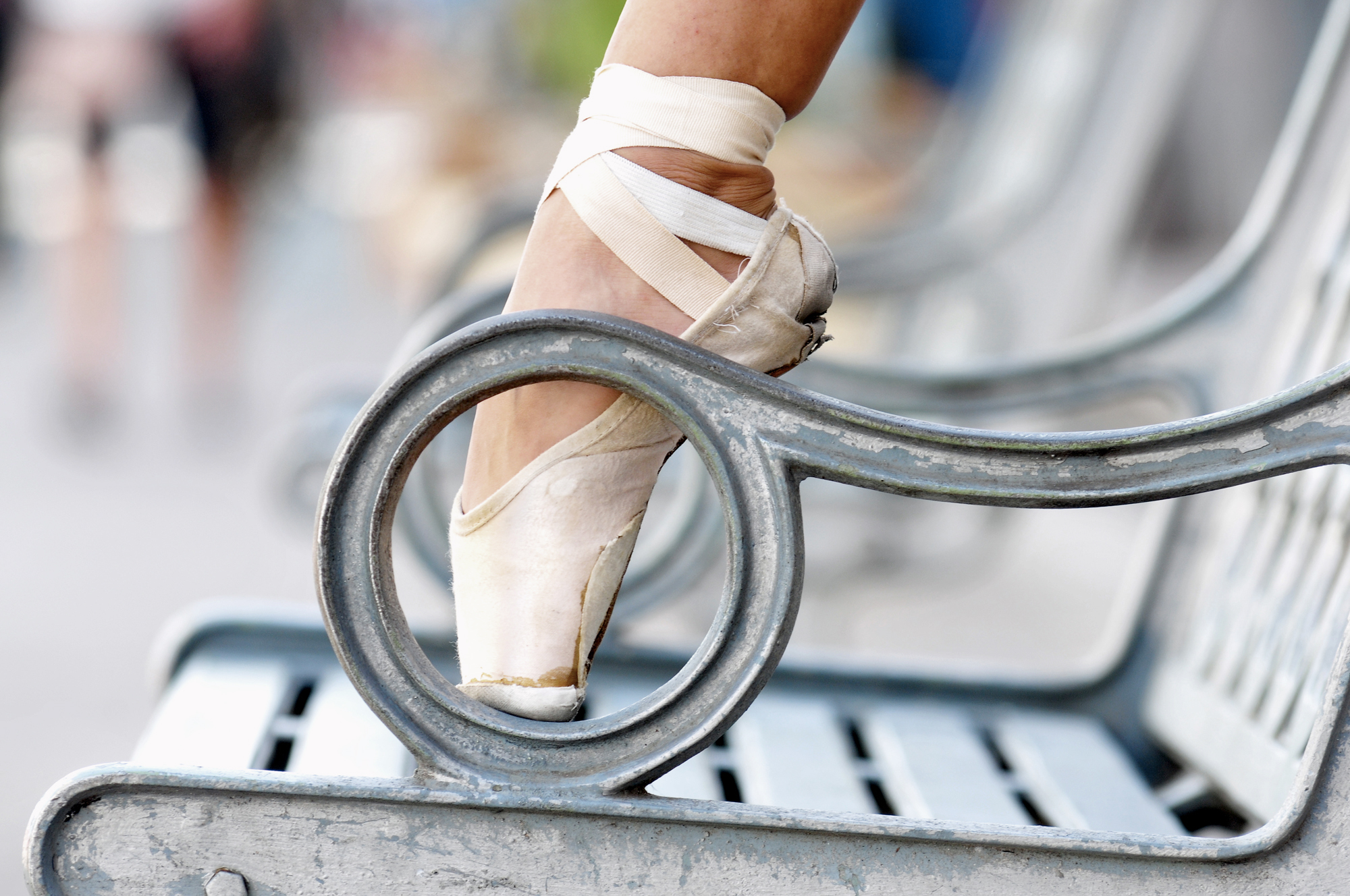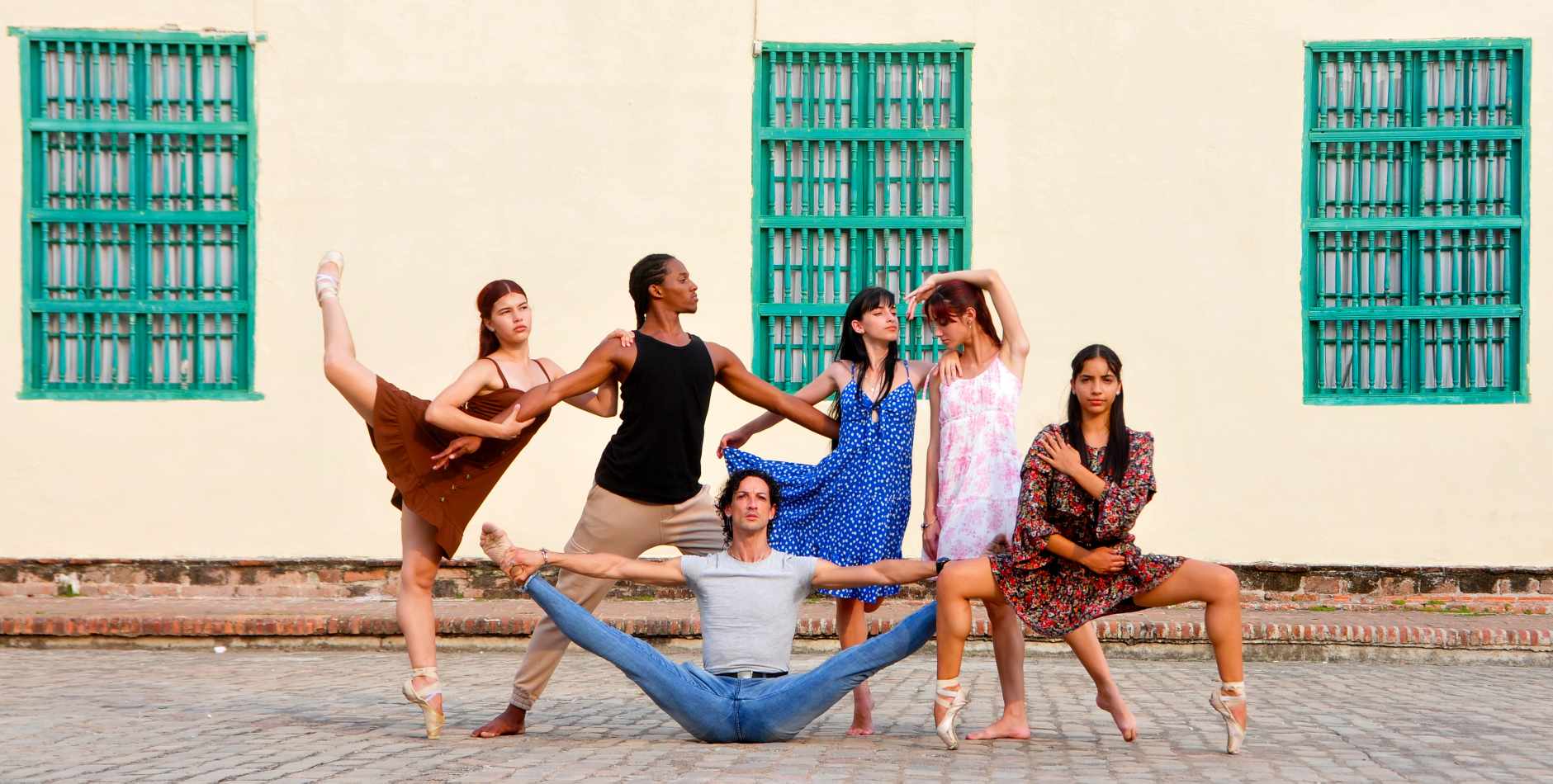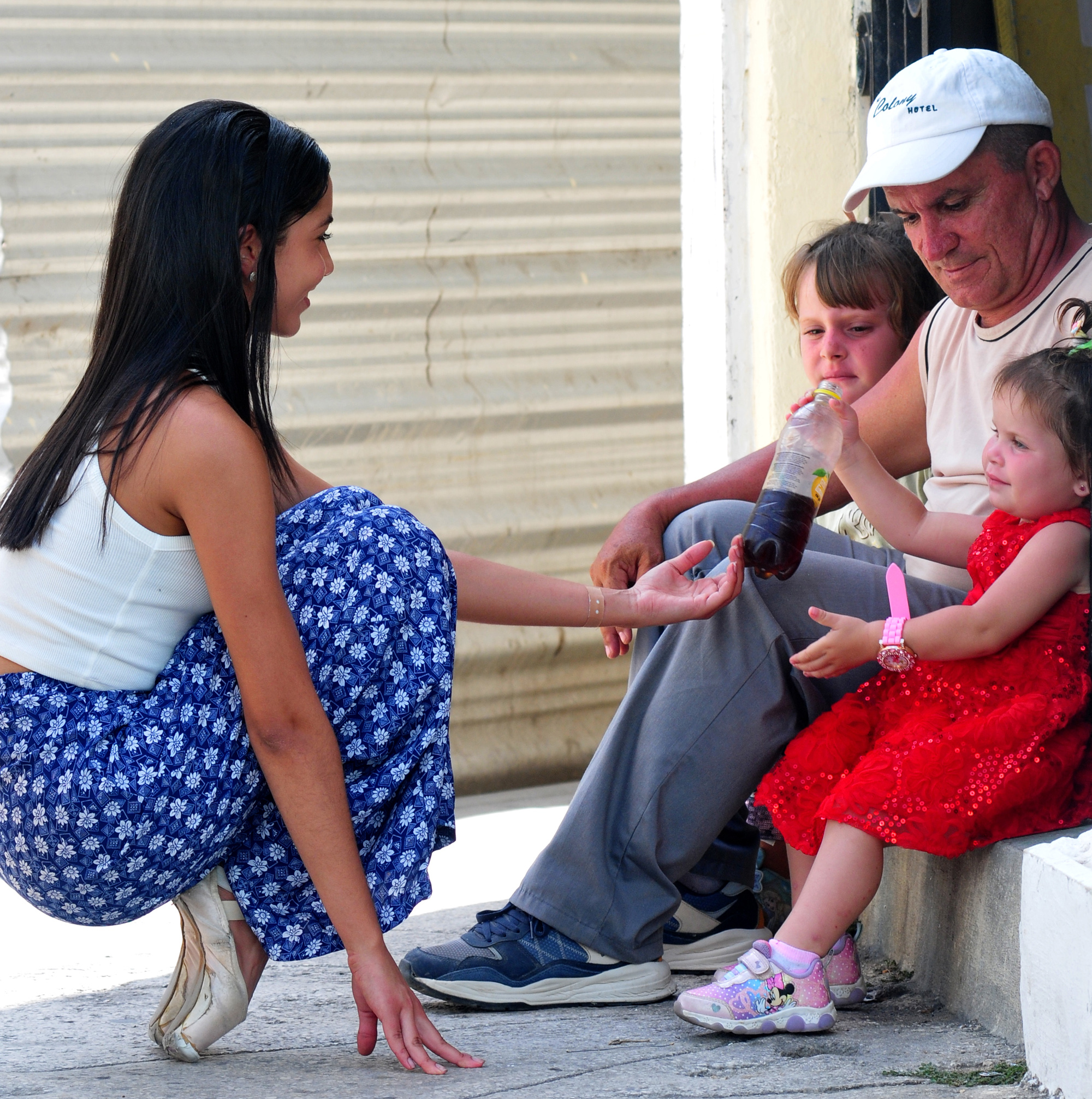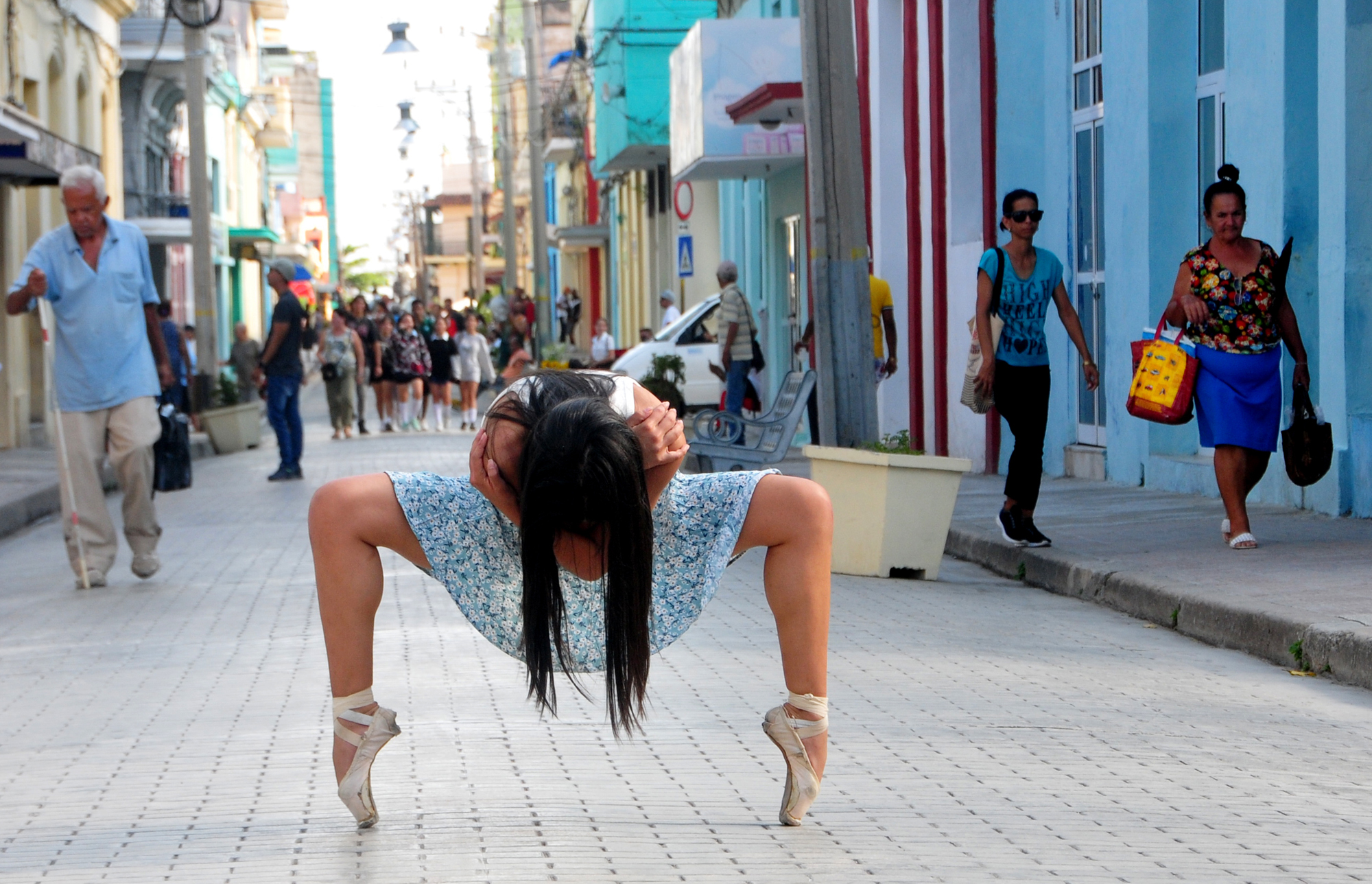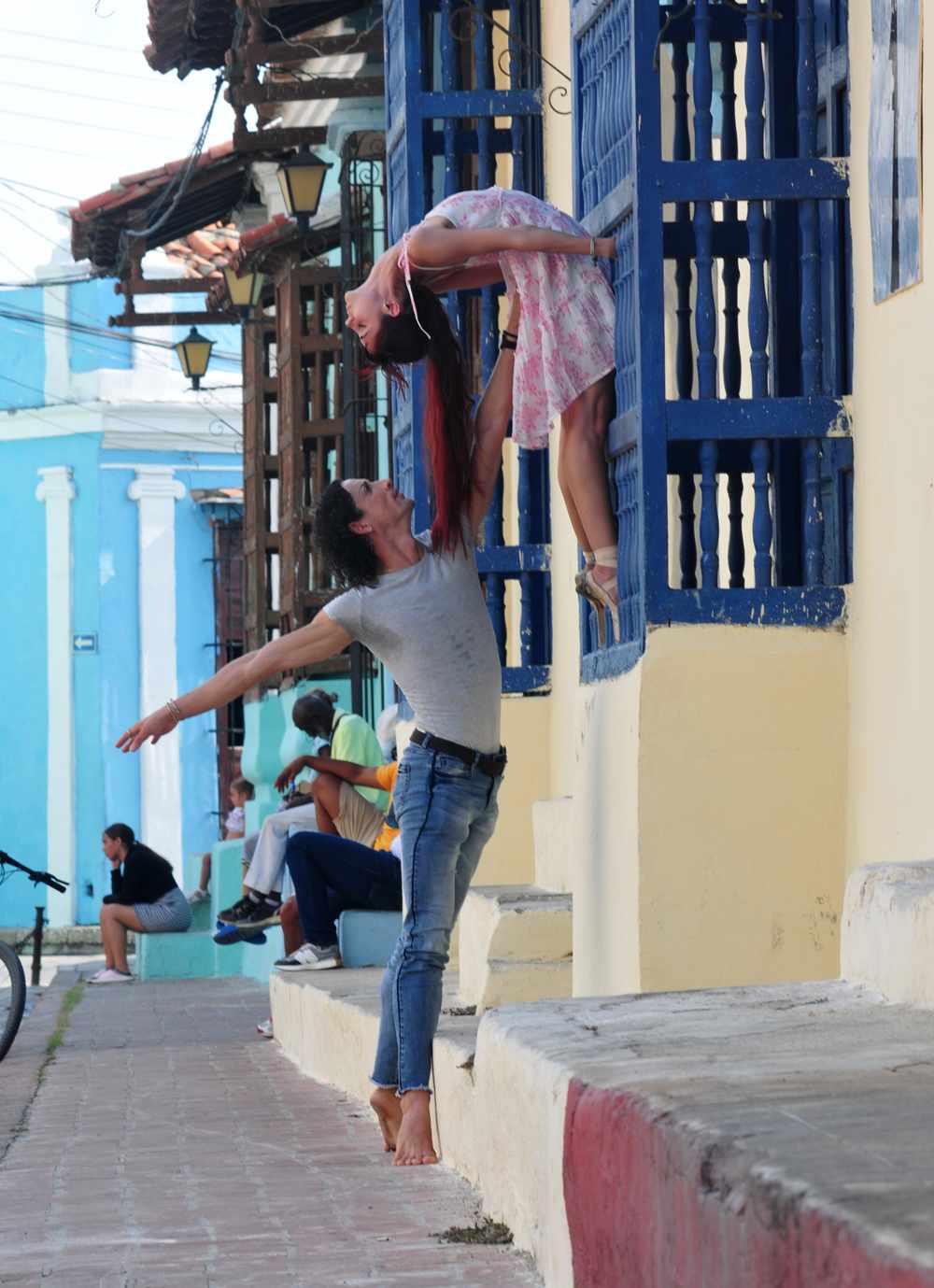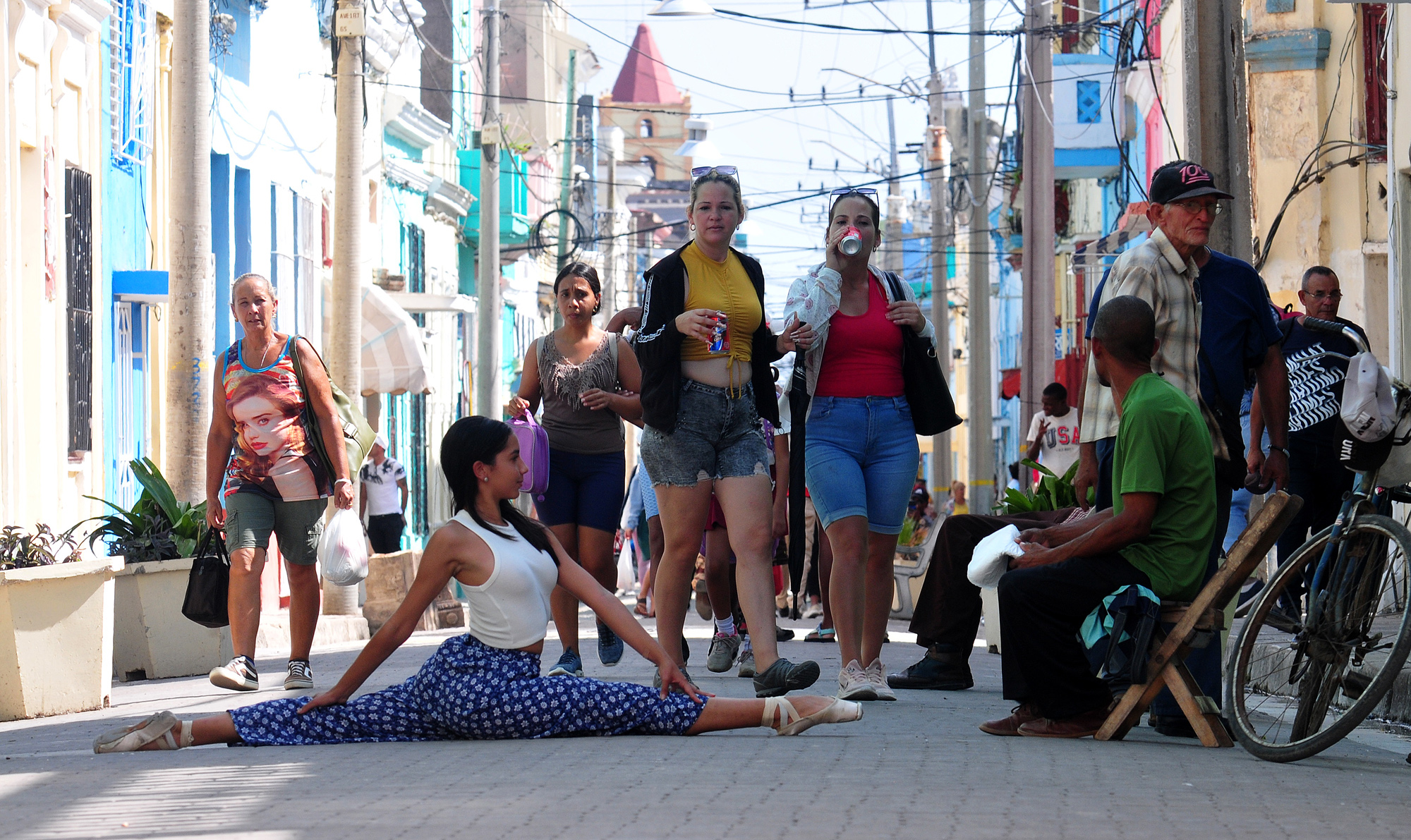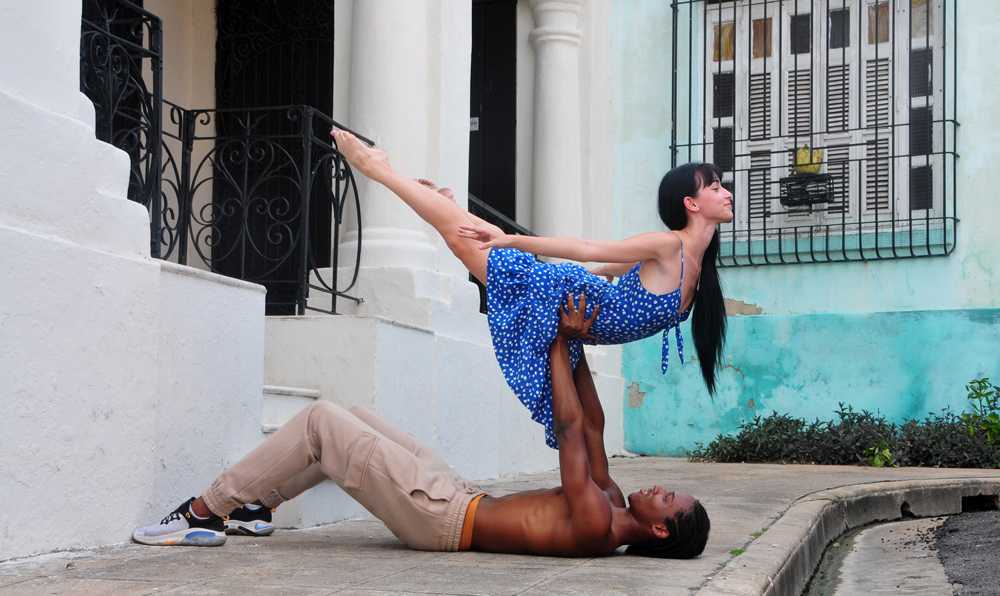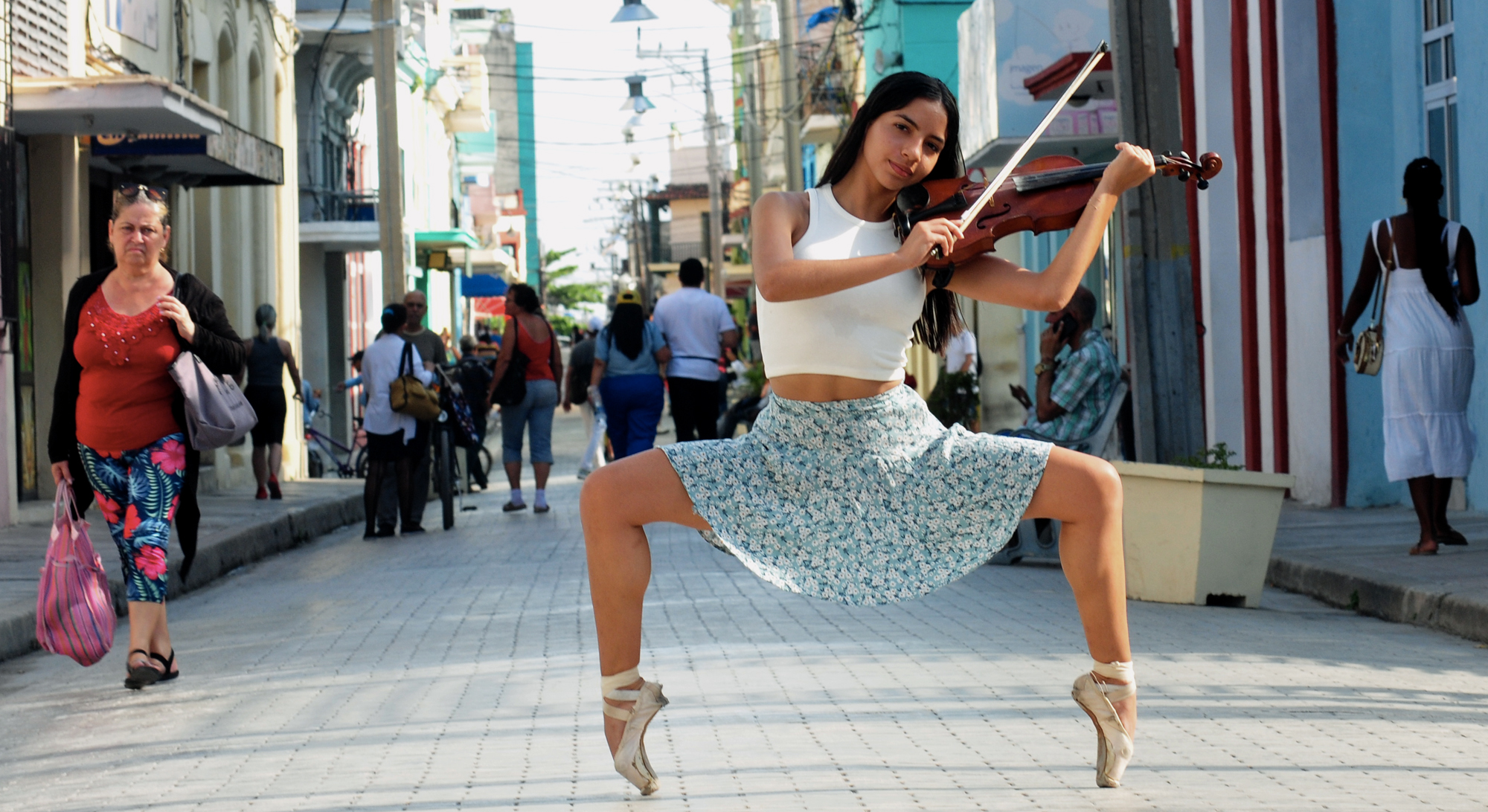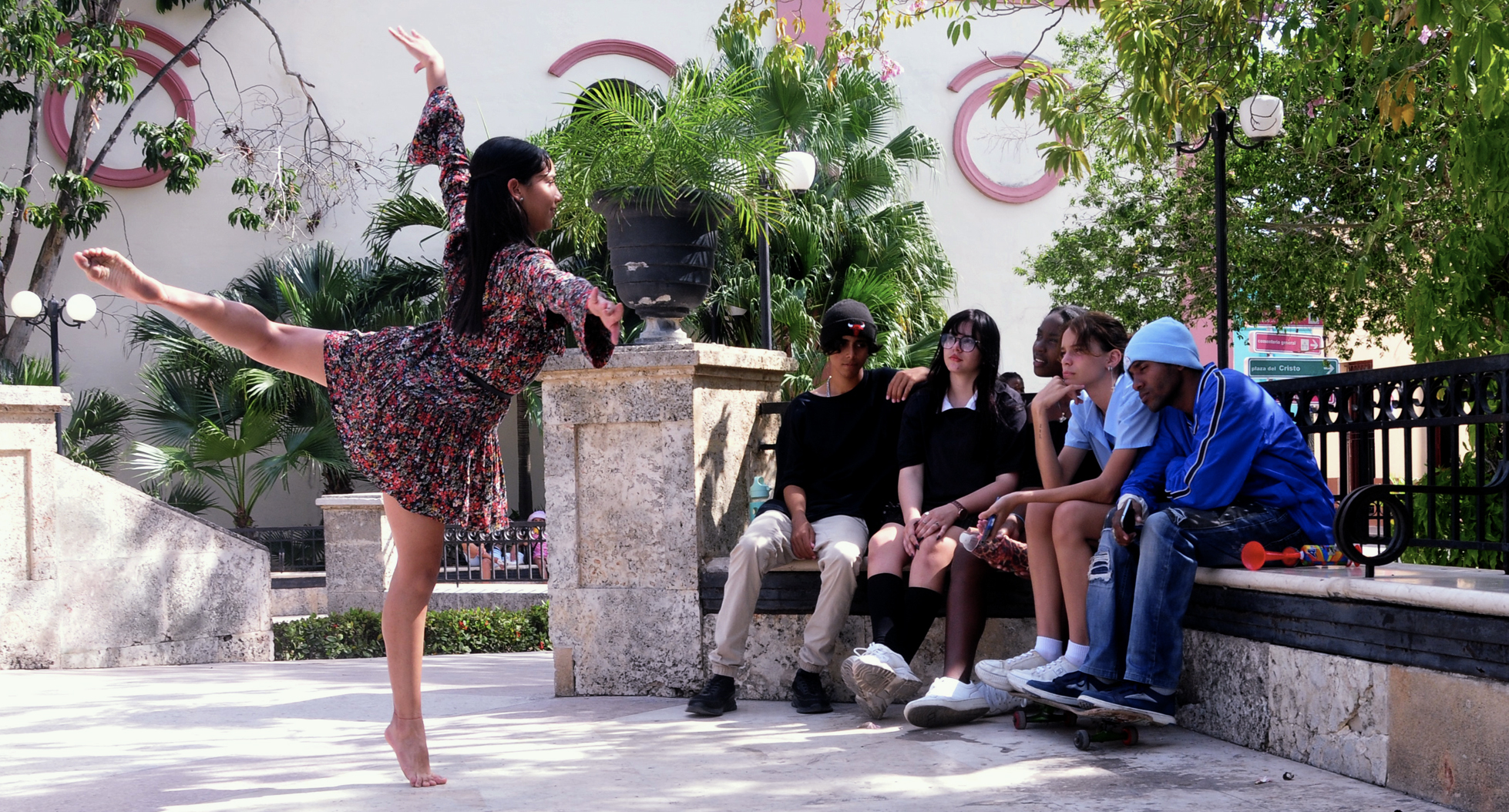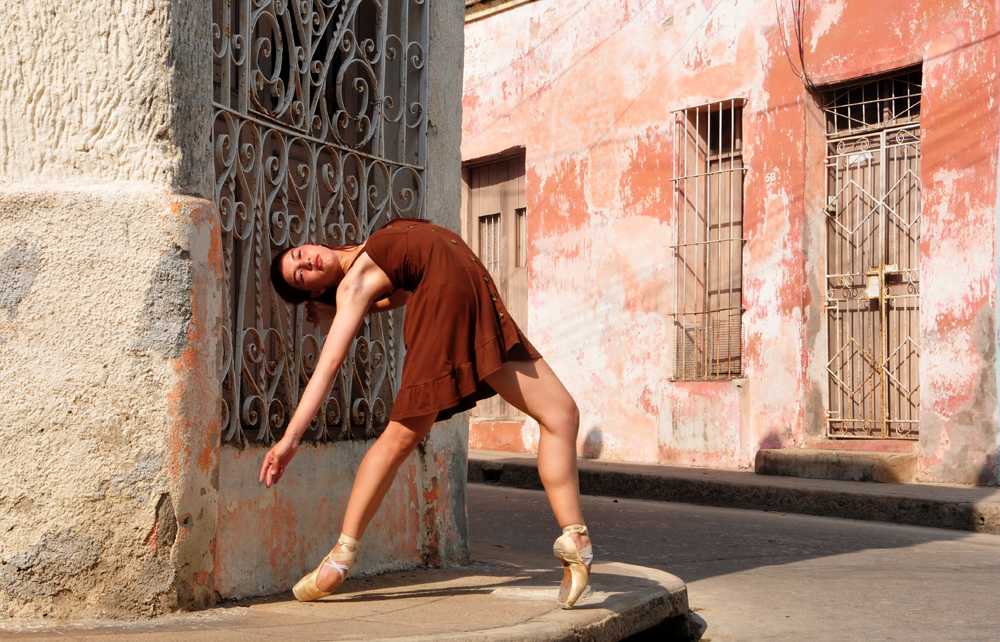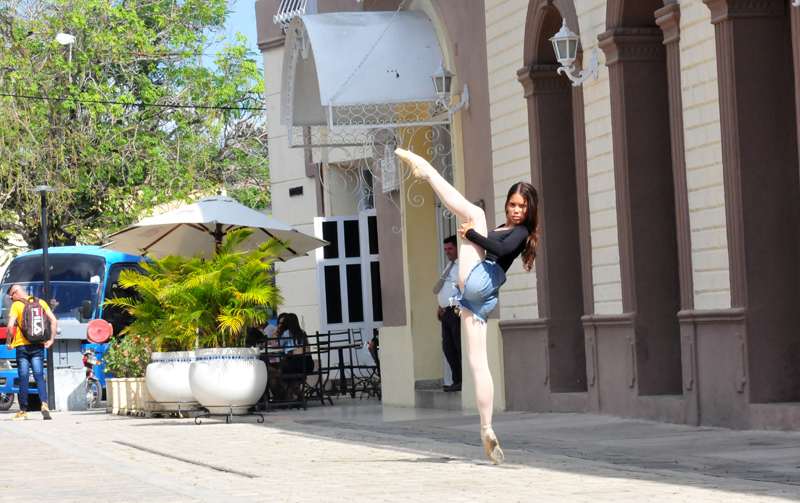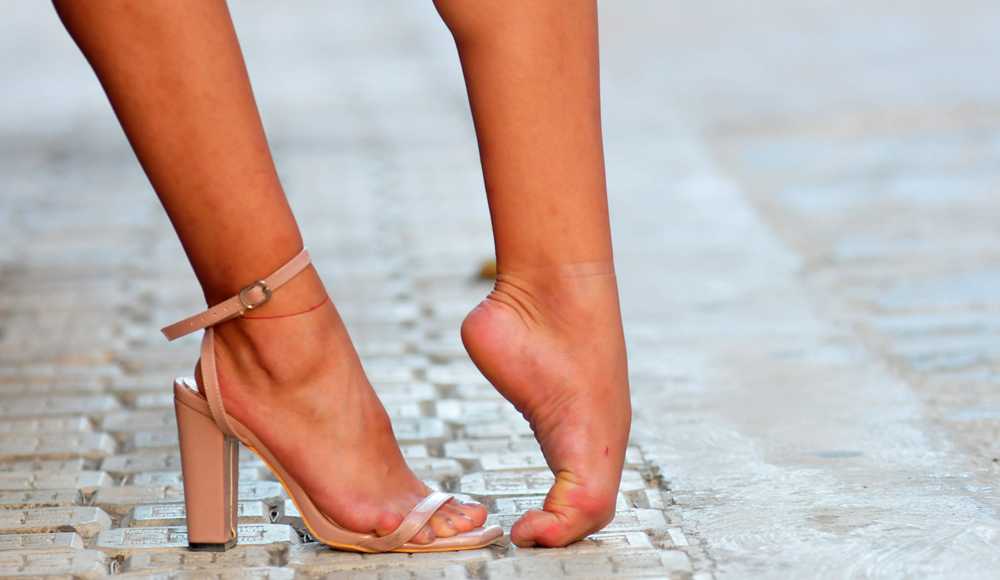The city and dance have something in common. It is the movement. And Camagüey and ballet converge in that stubbornness with which they challenge the laws of the body. It is enough to look at the twists and turns of broken plates that the streets simulate, to understand that resistance to what is ordered. Classical dancers defy gravity to touch the sky.
Sometimes, too many times, our daily walk deprives us of admiring the urban scene, a scene that the common inhabitant goes through with his conflicts, with the intimate drama of existence.
A moment is needed for respite, to contemplate and find relief, a goal, a joy in the achievement of others. Therefore, art is healing.
In the midst of the bustle of populated streets or in the stillness of desolate squares, a Havana photographer intervenes in the scene and achieves another point of view with the series Pasos sobre adoquines (Steps on the cobblestones).
It is not the first time of this type of street action, not even Jorge Luis Sánchez Rivera has been the first or the only one, but for him these sessions have become a mandatory practice on each visit.
Taking ballet out of the theater, bringing the dancer closer to ordinary people as a social experiment, is a challenge assumed by both parties. It humanizes the dancer, from that exhibition of achievements and also marks on the body that makeup hides or lights and costumes cover in the conventional performance.
These are not postcards for tourists, but the miracle of a dream made true with persistence. Maintaining the line entails certain deprivations. To live, too.
Jorge Luis's return coincides with International Dance Day, so his new look at the Camagüey Ballet as an inhabitant is a gift shared on April 29 through Adelante Digital.
Walking on cobblestones always entails a risk, as much as the uncertainty of a new day. But at each step, your technique, because insecurity never leads to the true path.
Love and pain are inseparable ingredients in every project, since the absence of what is not wanted does not hurt.
Yanni, Sheila Patricia, Laura, Lorena, Enrique, Melissa Maura and Yolaine represent a company, it is true, but they are also the visible soul of a city with butterfly wings and longing for the coast, which is to say, with their gaze to infinity.
This recidivism of Jorge Luis could be read as a whim or indulgence of an individual taste, but from that personal impulse he is portraying society.
He approaches the city as a setting for man's spiritual life. From the perspective of sociologists, man creates a space, creating himself; although not all inhabitants are aware of that.
The figure of the dancer stars in the painting, but in the set of elements the photographer determines an image of the identity of human groups, from his performance in places of social expression, civic participation and symbolic identification.
In the dialogue of the chosen places, with buildings from other centuries, and the people of today, it is possible to appreciate the evolution of the city. Various social sciences also insist that a city is a sociocultural construction. In the series Pasos sobre adoquines (Steps on cobblestones), Camagüey prevails with its own life.
510 years after the founding of the Villa de Santa María del Puerto del Príncipe, it has gradually become an area of permanence and gathering, of cultural mixing and of demographic attraction.
In Jorge Luis's photographs of historical and heritage areas of current Camagüey there is the expression, at the level of relationships, of a social project that tries to combine time, space and memory.
The urban phenomenon expresses the value system in progress in the culture of a place and a time, which explains that the more aware a society is of what it pursues... the more typified its cities are.
Each era has made its winds blow and generated different waves. As happens in the sea, only in groups can the wave carry its energy from one stage to another.
That is why today, the city and the dance, Camagüey and the ballet flow in the keys of its mysteries. A complicity for the beauty and transcendent movement of our time.
Translated by Linet Acuña Quilez
